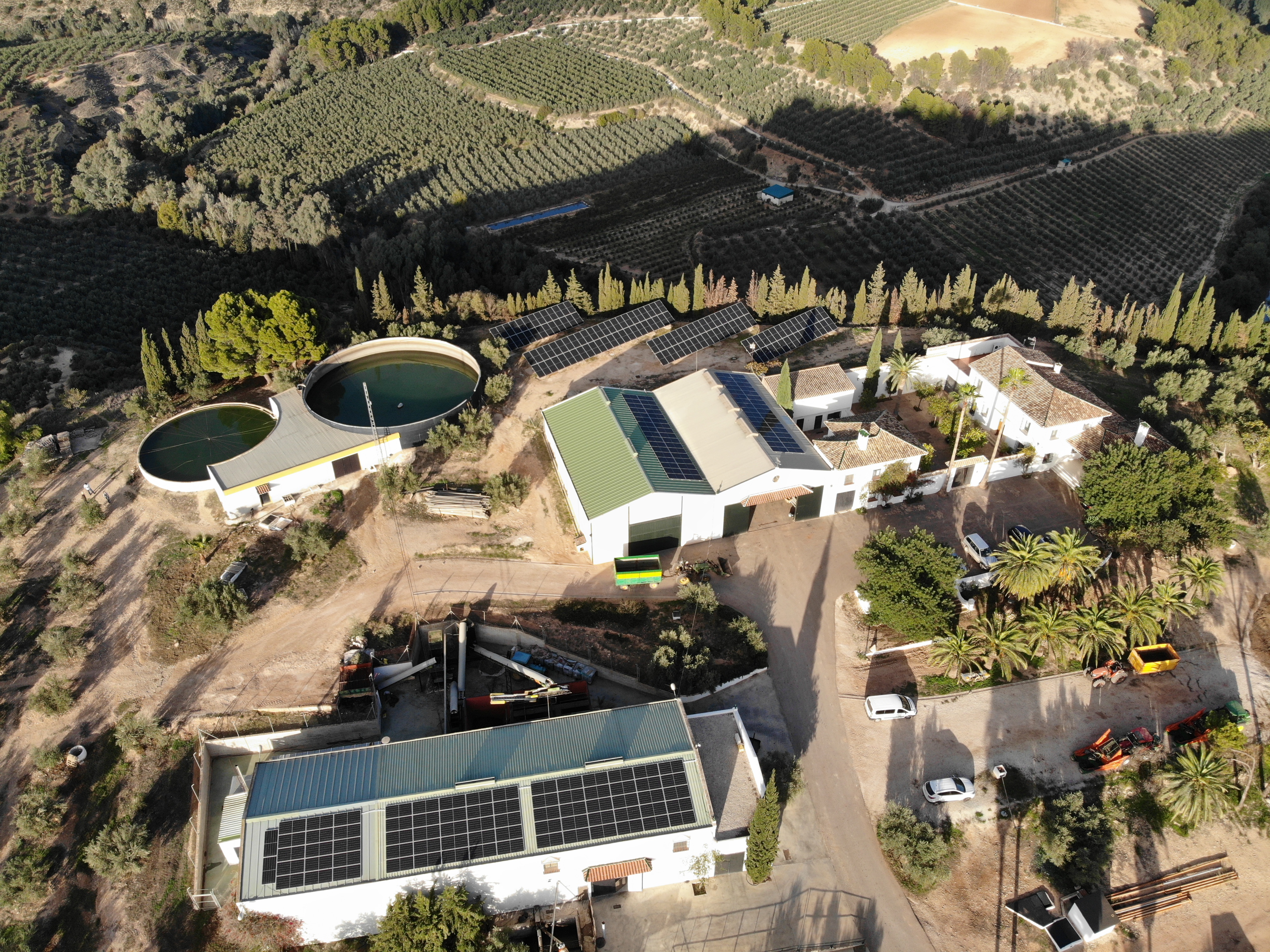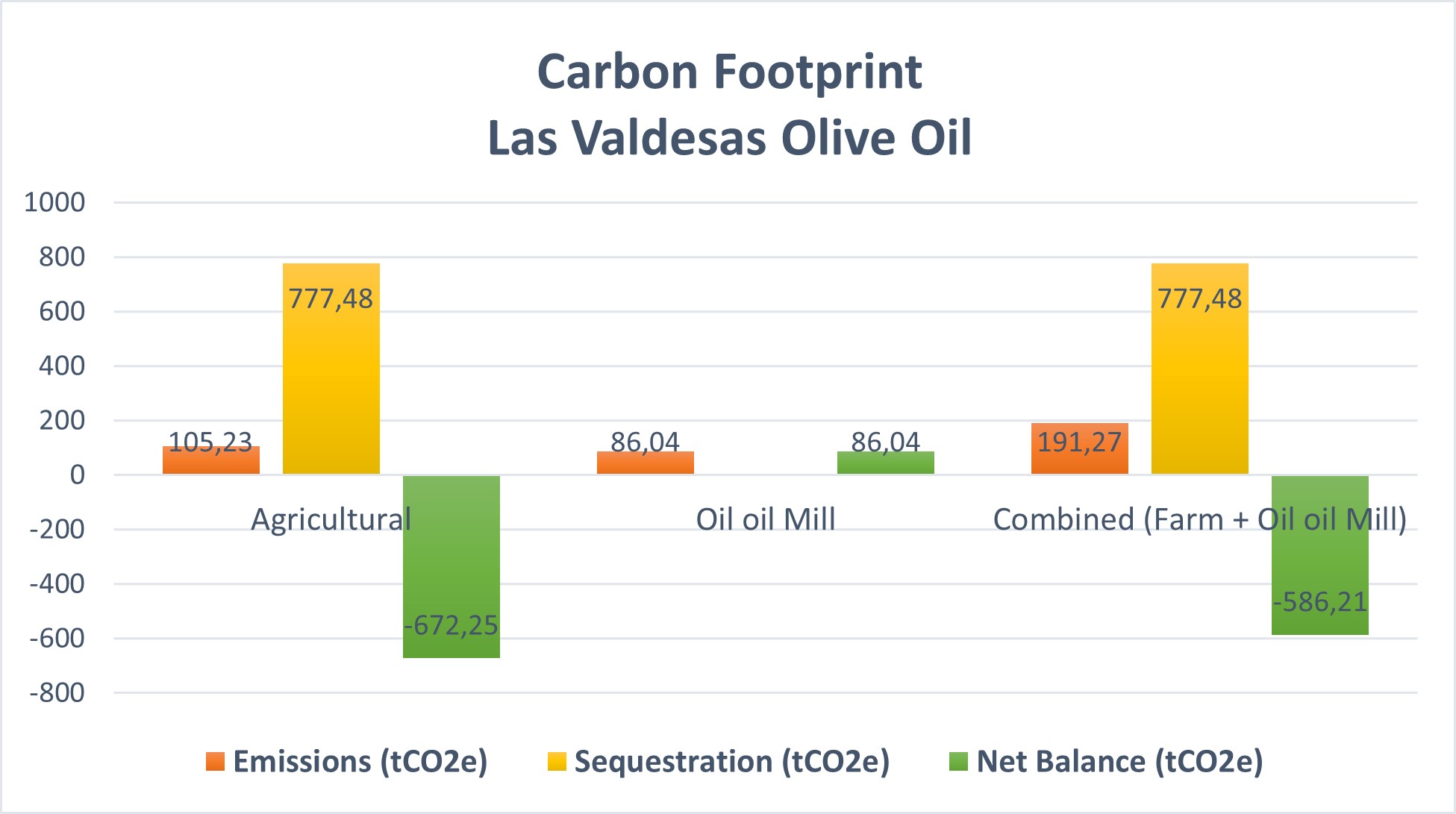At Las Valdesas, we are committed to sustainability and reducing the environmental impact of our activities. This is why we measure our carbon footprint, an indicator that reflects the greenhouse gas (GHG) emissions generated throughout the entire production process of our olive oil—from cultivating the olive trees to transforming the olives into oil and final packaging.
Quantifying our carbon footprint allows us to identify sources of emissions, such as machinery use, fertilizer application, and energy consumption during the olive transformation process. This helps us implement strategies to reduce our environmental impact.

For measuring emissions in agricultural activities, we use the Greenhouse Gas Protocol methodology, an international standard. The graph below shows emissions, sequestration, and the net balance for the different types of footprint: Agricultural, Oil oil Mill, and Combined (Farm + Oil oil Mill).

In 2023, the carbon footprint associated with our agricultural activities stands at -672.25 tCO2e, which means we capture more carbon than we emit. The mill emissions, generated during the milling and packaging processes, amounted to 86.04 tons of CO2. Combining emissions from both processes, we achieved a balance of -586.21 tons of CO2. This means that we effectively produce olive oil with a negative carbon footprint.
Through these efforts, we aim not only to produce high-quality extra virgin olive oil but also to actively contribute to environmental conservation and the fight against climate change.
To learn more about our commitment and the actions we undertake, we invite you to review our complete report and carbon footprint certificate, which validate our sustainable practices and favorable carbon capture results.
 They have already tasted it
Our customers
More than 5712 verified reviews"
They have already tasted it
Our customers
More than 5712 verified reviews"

